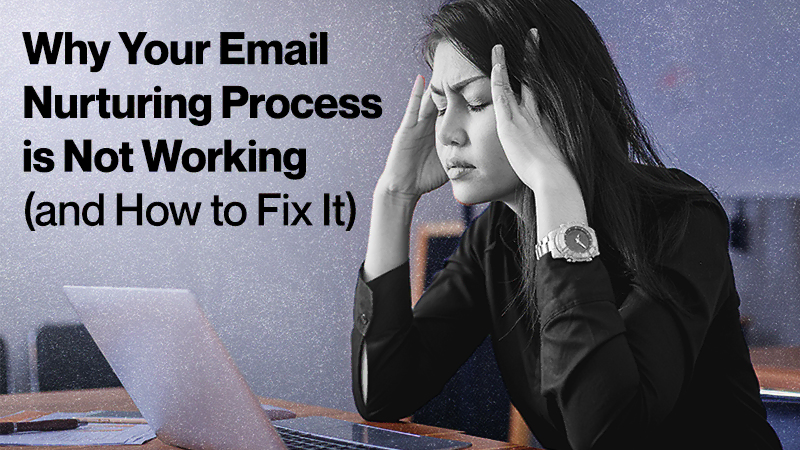What are your prospects doing if they are interacting with your website but aren’t ready to buy? They’re probably looking for answers to their difficulties and weighing their choices before making a buying decision.
Email nurture sequences, also known as lead nurturing, are a technique for marketers to assist leads along the buyer’s journey. By definition, lead nurturing is the process of forming productive relationships with potential consumers during the purchasing process.
Nurture email sequencing is scalable and successful, but one-on-one direct connection with all B2B prospects isn’t. Which comes with a stipulation or caveat? Email nurturing must be done with care.
Here is exactly why your email nurturing process might not be working and how you can effectively fix it.

Not Personalizing

You’ve probably collected data that can be readily integrated into your emails to give a personal touch if you’re using marketing automation tools like HubSpot. Simply addressing the email with their first name might be enough, or you can go a step further. Do you know what they do? Did you know what their title was in their position? The more information you can get from your leads, the more personalized your emails will be.
Related: How To Personalize Your Emails When You Only Have a First Name
Too much CTAs

At least one clear call-to-action (CTA) should be included in every email, but too many CTAs can be distracting. Not to mention, it’s an unattractive email.
If you’re unsure regarding the goal of your email, the prospect is likely to be as well. Before you start designing your sequence, take a step back and write down the email topic, major CTA, and additional CTAs if you have them in a document.
Related: 5 Strong CTA Examples (with Solid CTRs and Conversions) to Learn From
Sales Pitch Overkill

Not every lead is ready to buy the moment they engage with your business, so keep working on your elevator pitch.
By offering relevant, useful material, it’s crucial to meet customers where they are in the buyer’s journey. The appropriate morsels to give via email nurturing campaigns are videos, blogs, supplementary tools, case studies, and client testimonials.
Is it ever permissible to make sales pitches? Absolutely. You certainly ‘ask for the sale’ at some point in the nurturing process, which should be dictated by user engagement.
Related: How to Lose a Deal: 6 Sales Prospecting Pitch Mistakes
Missing the Right Time for the Handover
Your sales and marketing teams must work together to nurture leads.
The ultimate purpose of any nurturing program is to transition from marketing to sales after a lead has been qualified.

If the transfer is done too late, the lead may have made a different purchase choice. Alternatively, if the handover is done too soon, the sales team will be overloaded with leads that aren’t moving forward and will lose out on closing those who have reached precisely where you want them to be.
The handover is based on mutually agreed-upon customer profiles/journeys as well as mutually agreed-upon methods for determining precisely what a qualified lead should be like.
Conclusion
It’s especially important that sales and marketing synchronize and have a mechanism in place to indicate whenever a lead is talking directly to sales or vice versa when it comes to email nurturing. Emails from many persons at the same organization might confuse or annoy your leads in some situations.

Source link


